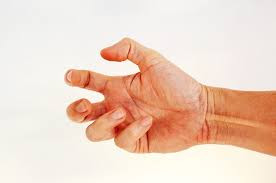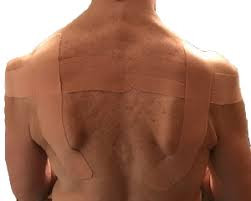Definisi
Distonia adalah gangguan gerak berupa kejang otot (kontraksi otot) yang terjadi tanpa disadari dan tidak dapat dikontrol. Distonia biasanya terlihat sebagai gerakan berulang atau memutar. Gangguan ini dapat mengenai satu bagian tubuh (distonia fokal), dua atau lebih bagian yang berdekatan (distonia segmental), atau semua bagian tubuh (distonia umum). Kejang otot dapat bersifat ringan hingga berat dan dapat menimbulkan rasa nyeri sehingga mengganggu aktivitas sehari-hari.
Penyebab
Penyebab pasti dari distonia belum diketahui. Namun, diperkirakan terkait dengan gangguan hubungan antar sel saraf di beberapa bagian otak. Beberapa jenis distonia bersifat diturunkan dari orang tua. Distonia juga bisa menjadi gejala penyakit atau kondisi lain seperti:
- Penyakit Parkinson
- Penyakit Huntington
- Penyakit Wilson
- Cedera otak traumatik
- Cedera lahir
- Stroke
- Tumor otak atau kelainan tertentu yang muncul pada beberapa orang dengan kanker (sindrom paraneoplastik)
- Kondisi kekurangan oksigen atau keracunan karbon monoksida
- Infeksi, seperti tuberkulosis atau ensefalitis
- Reaksi terhadap obat-obatan tertentu atau keracunan logam berat
Faktor Risiko
Beberapa faktor risiko distonia antara lain:
- Cedera kepala atau wajah dengan hilangnya kesadaran
- Riwayat keluarga distonia serta tremor (gerakan gemetar)
- Stroke
- Cedera pada bagian tubuh tertentu
- Riwayat sakit mata atau cedera leher
- Infeksi
- Penyakit tertentu seperti Parkinson
Gejala
Gejala distonia muncul dalam berbagai bentuk. Kontraksi otot dapat berupa:
- Muncul di satu area seperti kaki, leher, atau lengan. Distonia fokal yang muncul setelah usia 21 tahun biasanya mengenai leher, lengan, atau wajah dan cenderung tetap bersifat fokal atau segmental
- Terjadi saat melakukan kegiatan tertentu, seperti menulis
- Memburuk dengan stres, kelelahan, atau kecemasan
- Gejala lebih jelas seiring berjalannya waktu
Bagian tubuh yang dapat terkena meliputi:
- Leher (distonia servikal). Kontraksi otot leher dapat menyebabkan kepala berputar ke satu sisi, tertarik ke depan, atau ke belakang. Kondisi ini dapat menimbulkan rasa sakit.
- Kelopak mata. Kedipan yang cepat atau kontraksi kelopak mata (blefarospasme) diluar kendali menyebabkan mata menutup dan sulit untuk melihat. Kontraksi tersebut biasanya tidak menimbulkan nyeri. Kontraksi dapat bertambah saat berada di lingkungan bercahaya terang, di bawah tekanan, atau saat berinteraksi dengan orang. Mata juga dapat terasa kering.
- Rahang atau lidah (distonia oromandibular). Pada distonia ini, pasien biasanya mengeluhkan bicara menjadi cadel, keluar banyak air liur, dan kesulitan mengunyah atau menelan. Distonia oromandibular dapat menimbulkan nyeri dan sering terjadi bersamaan dengan distonia servikal atau blefarospasme.
- Pita suara (distonia spasmodik). Pasien dapat mengeluhkan suara menjadi kencang atau berbisik.
- Tangan dan lengan bawah. Beberapa jenis distonia hanya terjadi saat melakukan aktivitas berulang seperti menulis (distonia penulis) atau memainkan alat musik tertentu (distonia musisi).
Diagnosis
Untuk mendiagnosis distonia, dokter akan menanyakan gejala, riwayat kesehatan, serta melakukan pemeriksaan fisik. Untuk menentukan penyebab distonia, dokter mungkin merekomendasikan beberapa pemeriksaan penunjang seperti:
- Tes darah atau urin. Tes ini dapat menunjukkan tanda paparan racun pada tubuh atau kondisi lain
- MRI atau CT-scan. Tes ini dapat menunjukkan kelainan di otak, seperti tumor atau stroke
- Elektromiografi (EMG). Tes ini berfungsi untuk mengukur aktivitas listrik di otot.
- Tes genetik. Beberapa jenis distonia dikaitkan dengan kelainan pada gen tertentu. Dengan mengetahui gen tersebut, dapat membantu proses pengobatan.
Tata Laksana
Distonia belum bisa disembuhkan. Namun, obat-obatan dapat mengurangi gejala. Operasi kadang diperlukan untuk mengatur saraf atau daerah otak tertentu yang terganggu pada kasus distonia parah. Untuk mengatasi kontraksi otot, dokter dapat merekomendasikan obat-obatan hingga operasi.
Obat-obatan
Suntikan toksin botulinum (Botox, Dysport, dll) pada otot yang terkena dapat mengurangi atau menghilangkan kontraksi otot dan memperbaiki postur tubuh yang tidak normal. Suntikan biasanya diulang setiap tiga sampai empat bulan. Efek samping umumnya ringan dan bersifat sementara, meliputi kelemahan otot, mulut kering, atau perubahan suara.
Obat lain yang bekerja dengan cara mengatasi gangguan pada bahan kimia di otak (neurotransmitter) yang menyebabkan gangguan gerakan otot. Obat-obatan ini harus dengan resep dokter. Pilihannya obatnya meliputi:
- Carbidopa-levodopa, meningkatkan kadar neurotransmitter dopamin
- Triheksifenidil dan benztropin, bekerja pada neurotransmiter selain dopamin. Efek sampingnya antara lain kehilangan memori, penglihatan kabur, mengantuk, mulut kering, dan sembelit
- Tetrabenazine dan deutetrabenazine, menghambat dopamin. Efek samping dapat berupa mengantuk, gugup, depresi, atau insomnia
- Diazepam, clonazepam, dan baclofen. Obat-obatan ini mengurangi komunikasi antar saraf dan dapat mengatasi beberapa jenis distonia. Efek sampingnya berupa mengantuk.
Terapi
Dokter juga dapat menyarankan:
- Fisioterapi, terapi okupasi, atau keduanya untuk membantu mengurangi gejala dan memperbaiki fungsi tubuh
- Terapi wicara jika distonia mengenai pita suara
- Peregangan atau pijat untuk merelaksasi otot
Pembedahan
Jika gejala Anda parah, dokter dapat merekomendasikan:
- Stimulasi otak dalam. Elektroda ditanamkan ke bagian tertentu pada otak dan dihubungkan ke generator yang ditanamkan di dada. Generator mengirimkan sinyal listrik ke otak untuk membantu mengontrol kontraksi otot. Pengaturan pada generator disesuaikan dengan kondisi pasien.
- Operasi denervasi selektif. Dilakukan dengan memotong saraf yang menyebabkan kejang otot. Prosedur ini menjadi pilihan untuk mengobati beberapa jenis distonia yang belum berhasil diobati dengan terapi lain.
Pola Hidup Sehat dan Pengobatan Rumahan
Distonia tidak dapat disembuhkan, namun Anda dapat melakukan beberapa hal berikut untuk meminimalisasi efeknya:
- Latihan sensori untuk mengurangi kejang otot. Menyentuh bagian tubuh yang sedang mengalami kejang otot dapat menyebabkan kejang berhenti sementara.
- Kompres panas dan dingin. Kompres panas dan dingin secara bergantian dapat membantu meringankan nyeri otot.
- Manajemen stres. Pelajari cara yang efektif dalam menghadapi masalah untuk mengatasi stres Anda, seperti pernapasan dalam, dukungan sosial, dan memotivasi diri sendiri.
Pengobatan Alternatif
Pengobatan alternatif untuk distonia belum banyak diteliti dan dipelajari. Konsultasikan dahulu pada dokter sebelum memulai pengobatan alternatif. Beberapa pilihan pengobatan alternatif antara lain:
- Meditasi dan latihan pernapasan dalam. Keduanya dapat meredakan stres dan mengurangi kejang otot.
- Umpan balik biologis. Seorang terapis menggunakan perangkat elektronik untuk memantau fungsi tubuh Anda, seperti ketegangan otot, detak jantung, dan tekanan darah. Anda kemudian belajar bagaimana cara yang tepat untuk mengontrol gangguan yang terjadi. Hal ini dapat membantu mengurangi ketegangan otot dan stres.
- Yoga. Yoga menggabungkan postur fisik, teknik pernapasan, dan meditasi atau relaksasi.
Pasien distonia dapat mengalami kesulitan beraktivitas sehingga rentan untuk stres. Tubuh pasien distonia dapat bergerak sendiri tidak seperti keinginannya sehingga pasien merasa tidak nyaman saat berada di tengah orang banyak. Pasien dan keluarga dapat meminta bantuan pada terapis atau bergabung dengan kelompok-kelompok pendukung.
Komplikasi
Bergantung pada jenis distonia, komplikasi dapat mencakup:
- Cacat fisik yang mempengaruhi kinerja dan aktivitas sehari-hari
- Gangguan penglihatan jika distonia mempengaruhi kelopak mata
- Kesulitan menggerakan rahang, menelan, atau berbicara
- Nyeri dan kelelahan karena kontraksi otot yang terus-menerus tanpa bisa dikontrol
- Depresi, kecemasan, dan menarik diri dari lingkungan sosial
Pencegahan
Saat ini, belum ada obat atau tindakan yang benar-benar mencegah distonia atau memperlambat perkembangannya. Namun, dengan menghindari hal-hal berlebihan berikut, dapat menjaga kondisi tetap stabil dan mencegah perburukan distonia, yaitu:
- Stres
- Kelelahan
- Banyak bicara
- Agitasi (rasa jengkel, kesal, atau gelisah dengan atau tanpa adanya pemicu)
Selain sebagai terapi, suntikan toksin botulinum disebutkan dapat mencegah kontraksi otot serta memberikan perbaikan sementara pada postur dan gerakan yang tidak normal. Pemeriksaan genetik juga digunakan sebagai pencegahan karena dapat menunjukkan apakah Anda memiliki mutasi genetik yang dapat menyebabkan distonia.
Kapan Harus ke Dokter?
Tanda-tanda awal dari distonia biasanya ringan, muncul sesekali, dan hanya mempengaruhi aktivitas tertentu. Namun, segera konsultasi dengan dokter jika Anda mengalami kontraksi otot yang tidak disengaja dan tidak dikontrol. Jangan menunda hingga kondisi memberat. Pengobatan dini dapat memperbaiki kualitas hidup pasien dan mencegah terjadinya komplikasi yang berat.
Mau tahu informasi seputar penyakit lainnya? Cek di sini, ya!
- dr Nadia Opmalina
Dystonia. (2020). Retrieved 6 Desember 2021, from https://www.mayoclinic.org/diseases-conditions/dystonia/symptoms-causes/syc-20350480
Wolff EAM. (2020). Dystonias. Retrieved 11 Desember 2021, from https://emedicine.medscape.com/article/312648-overview#a1
O’Connell K. (2019). Uncontrolled or slow movement (dystonia). Retrieved 11 Desember 2021, from https://www.healthline.com/health/dr/cervical-dystonia#treatment
Bruce DF. (2021). Dystonia: causes, types, symptoms, and treatments. Retrieved 11 Desember 2021, from https://www.webmd.com/brain/dystonia-causes-types-symptoms-and-treatments
Nall R. (2018). Focal dystonia. Retrieved 11 Desember 2021, from https://www.healthline.com/health/focal-dystonia
Newman T. (2021). What you need to know about dystonia. Retrieved 11 Desember 2021, from https://www.medicalnewstoday.com/articles/320487
Pana A, Saggu BM. (2020). Dystonia. StatPearls LCC Publishing. Retrieved 11 Desember 2021, from https://www.ncbi.nlm.nih.gov/books/NBK448144/
Dystonia. (2021). Retrieved 11 Desember 2021, frm https://www.hopkinsmedicine.org/health/conditions-and-diseases/dystonia












